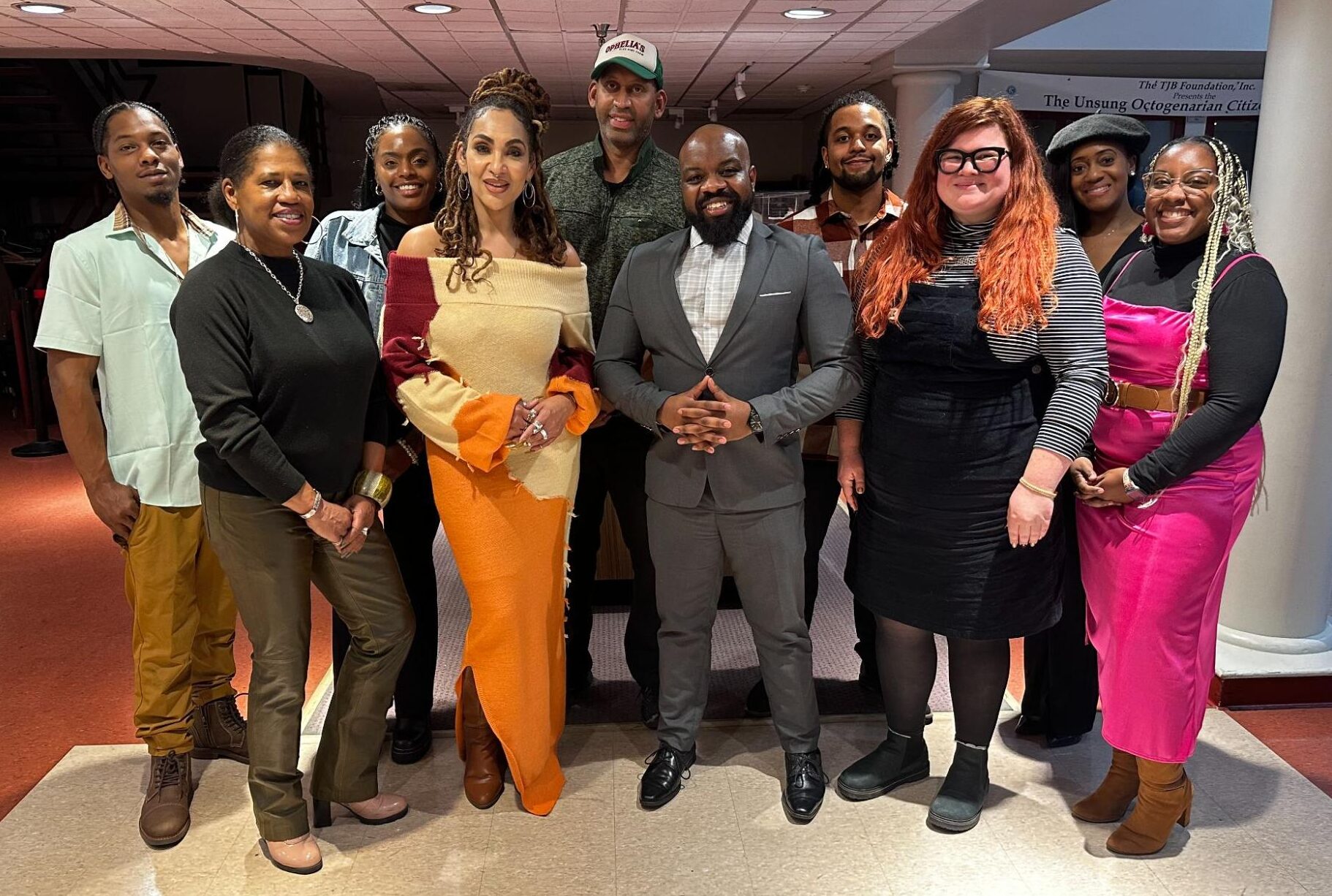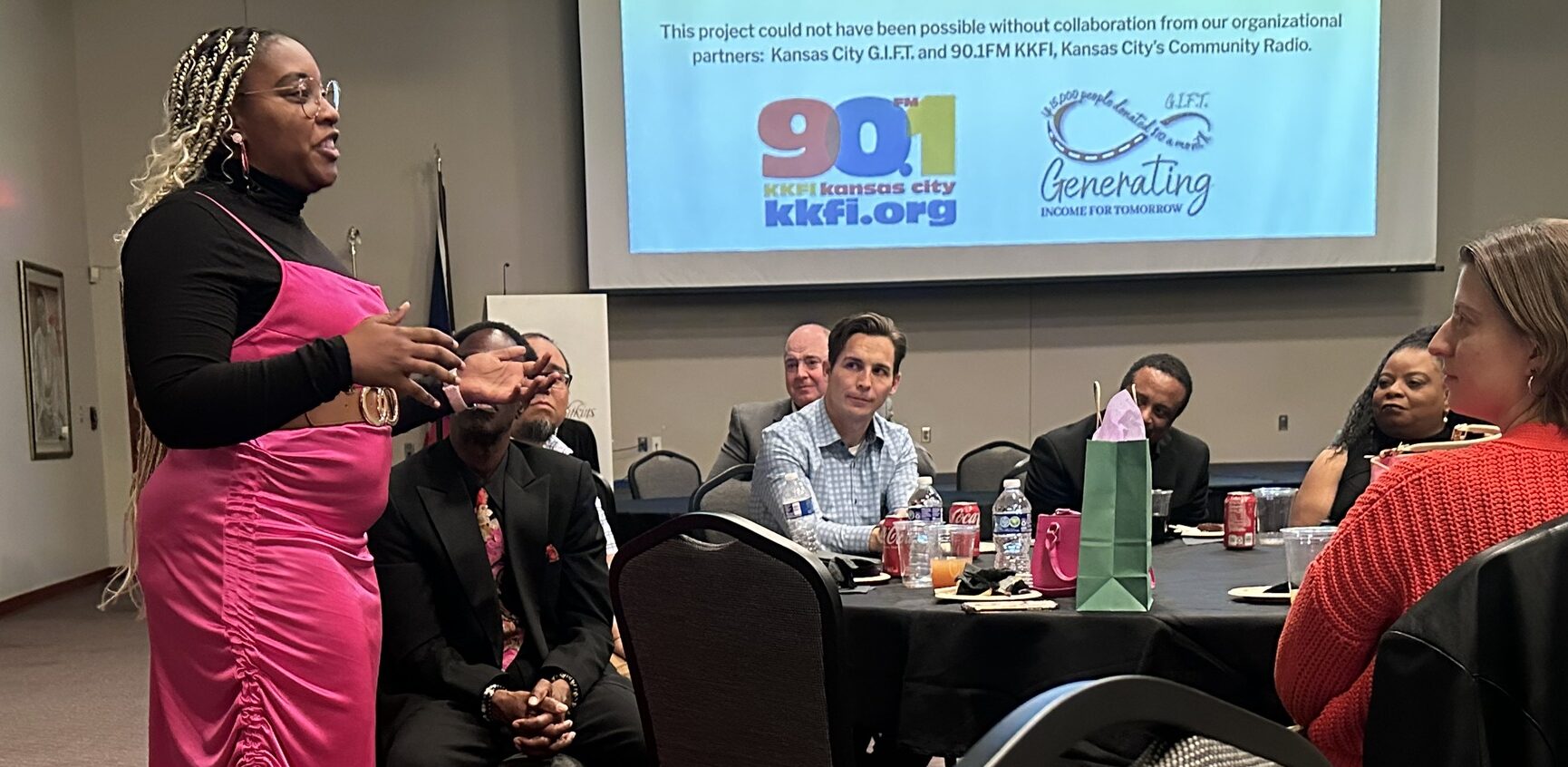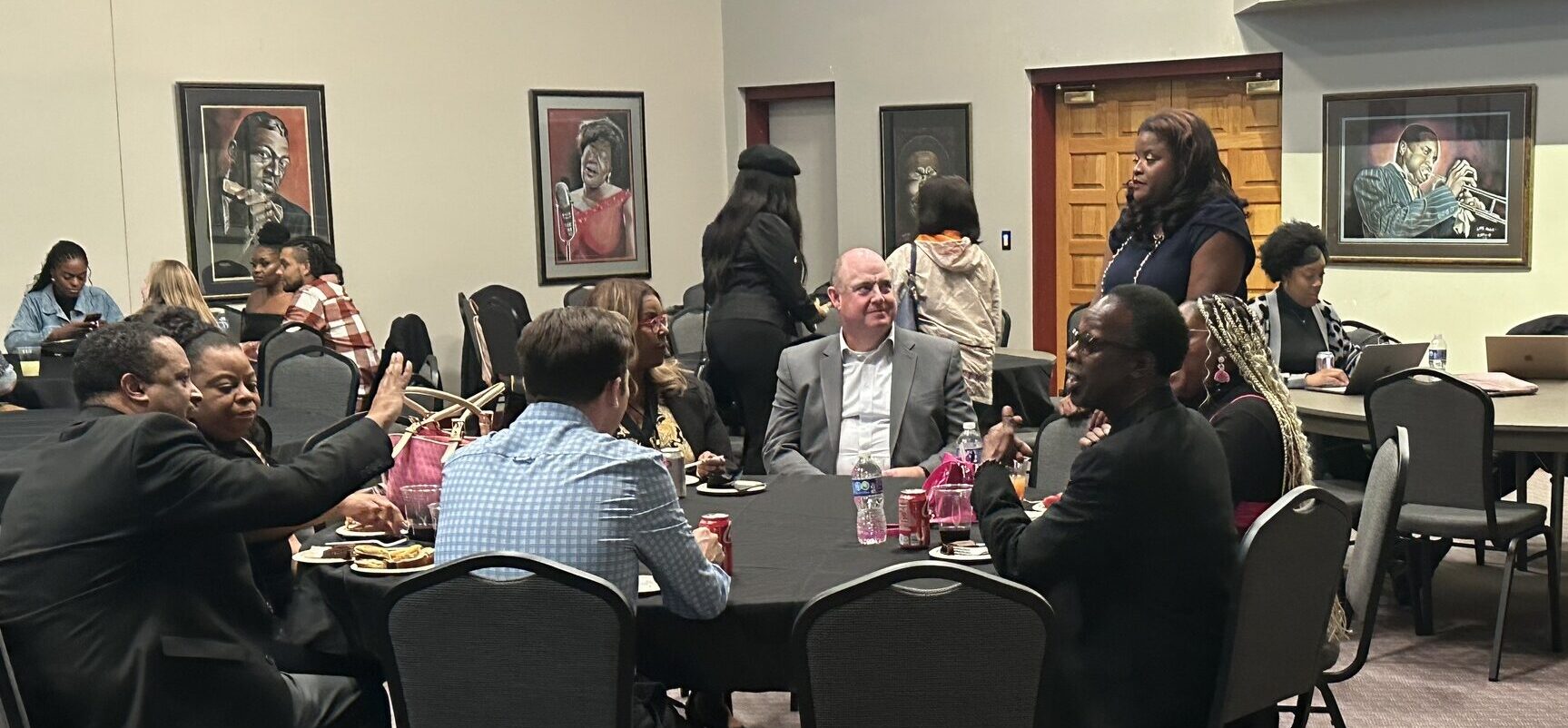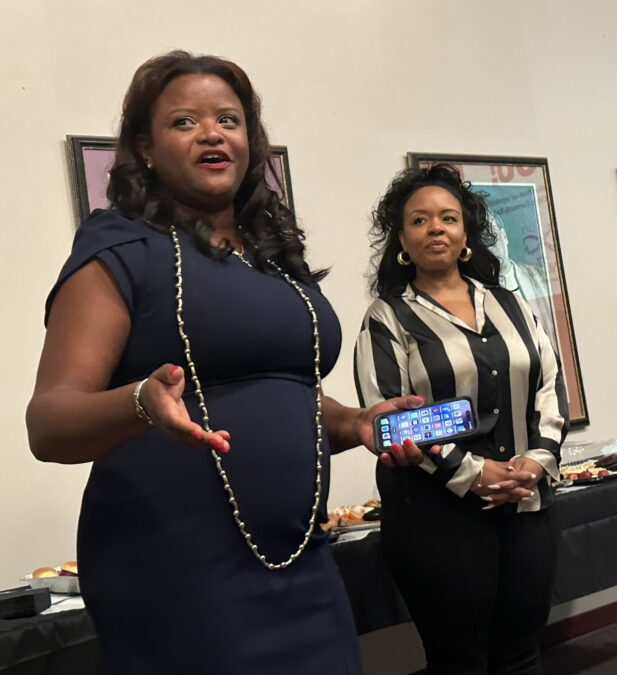5 tips to build local partnerships that give back to your community
Hannah Wise and Mará Rose Williams, The Kansas City Star, Here's an idea to steal and adapt: Your local news organization can build stronger communities and publish more diverse reporting through mutually beneficial local partnerships.
Here's an idea to steal and adapt: Your local news organization can build stronger communities and publish more diverse reporting through mutually beneficial local partnerships. This is a series on Better News to a) showcase innovative/experimental ideas that emerge from the Knight-Lenfest Newsroom Initiative and b) share replicable tactics that benefit the news industry as a whole.
This “win” comes from Hannah Wise, assistant managing editor for engagement & experimentation, and Mará Williams, assistant managing editor for race & equity, at The Kansas City Star. The Star participated in the Gannett-McClatchy Table Stakes program in 2019-20 and API’s Mobilizing News sprint for Table Stakes alumni in 2023.
The Kansas City Star has spent the last several years remaking itself to better reflect the needs of our community.
We are committed to The Star being a force for good in our region. In 2020, we published “The Truth in Black and White,” an apology for the news organization’s role in perpetuating systemic racism in Kansas City.
It was the first step in our work to repair a broken relationship with historically underserved communities. The break was of our doing; the repair must be, as well. We have made a commitment to present more stories, voices and images from these communities, and to spend time in the communities engaging with residents and businesses.
A lesson learned through research conducted during our 2020 project was that in the past, more time was spent talking about underrepresented communities and little time was spent providing space for those residents to tell their own stories.
 It was with that commitment in mind that we participated in the Mobilizing News sprint for Table Stakes alumni in the summer of 2023. During the sprint, we developed “Voices of Kansas City,” a community conversation project to highlight the experiences of Kansas Citians making a difference.
It was with that commitment in mind that we participated in the Mobilizing News sprint for Table Stakes alumni in the summer of 2023. During the sprint, we developed “Voices of Kansas City,” a community conversation project to highlight the experiences of Kansas Citians making a difference.
The project helped us to make considerable strides in repairing those broken relationships through two key community partnerships with a nonprofit supporting Black small businesses and a local community radio station that was undertaking a similar challenge to add diverse voices to their on-air programming.
Here are five key takeaways from The Star’s work that we hope you’ll take to develop your own community partnerships.

Dayonne Richardson, a teacher, author and the owner of Mirror Mirror Books, shared with Star staff members and other small business owners, who attended the mixer, about her experience being a part of the first season of Voices of Kansas City. (Mark Manning/90.1 FM KKFI)
Listening: The community becomes the assigning editor
We held community listening sessions throughout 2023 to hear directly from our neighbors what they need most from The Star — both as a powerful institution and as journalists who seek to reflect the diversity of the communities that make Kansas City home.
Community members in Kansas City and the surrounding suburban communities told us that they wanted The Star to help them hear more about Kansas Citians making a positive impact. At the same time, city leaders were discussing the challenges to shrink the racial wealth gap and how Kansas City might approach reparations for its Black citizens.
Star editors, in collaboration with our Black Community Advisory Board, decided that the first “Voices of Kansas City” season would focus on stories of success, joy and perseverance from eight Black small business owners. Establishing a Black Community Advisory Board has been helpful in our mission to connect, engage and build trust in designated communities.
Participants in our listening sessions, especially those held with members of the Black community, said that they were hesitant to participate in traditionally reported stories because they were not confident that the journalist would accurately share their story. This led us to conceive of a project that was driven by recorded Q&As that would then be transcribed for publication online and in print, in addition to through audio and video.
Connecting: Identifying community partners
We wanted to ensure that the business owners being highlighted represented the diversity of Kansas City’s Black business community. We also wanted to find a partner who could help connect us with business owners who we may not already know, and vouch for The Star’s intentions and commitment to producing work that is beneficial to, not extractive of, the community.
Kansas City GIFT is an important and well-established organization in Kansas City’s Black community. The nonprofit gives grants to Black small businesses and provides additional support to entrepreneurs through their connections and facilities.
We’d worked with GIFT CEO Brandon Calloway previously to facilitate a community listening session during which GIFT grant recipients shared some of the feedback that inspired our Voices project. GIFT was happy to work with The Star to identify business owners for the project.
We were very interested in also finding a publishing partner organization that would prioritize the community nature of Voices and expand the potential audience for these stories.
90.1 FM KKFI, Kansas City’s community radio station, fit the bill. The station has four full-time employees and is otherwise staffed entirely by volunteers. We learned that KKFI was undertaking efforts to diversify their programming to feature more shows from women and people of color — making Voices of Kansas City an excellent opportunity for both organizations.

Black small business owners got acquainted with Kansas City Star editors, reporters and members of the Star’s Black Community Advisory Board during a mixer held by the Star at a local Black-run cultural heritage center. (Mark Manning/90.1 FM KKFI)
What expectations and goals should you have?
The real measure of success for projects like this should be focused on building connections and trust with your community. That does not mean that more traditional audience metrics, like page views or percentage of local audience, should be disregarded. Keeping track of traditional audience metrics will help you show your progress. Consider this work as an investment in the community that will return future audience growth.
In addition to setting audience goals, our outcome goals focused on:
- Connecting with our target community, in this case Black small business owners
- Introducing the featured Black small business owners to a broader swath of Kansas City through stories published in The Star and aired on KKFI radio
- Including more of our newsroom staff in this project than participated in our earlier listening sessions
- Developing a template for these stories that could be replicated for future seasons or by other newsrooms
How do you guard against extractive behavior?
We were very intentional throughout this project to check in with ourselves, our community partners and our Table Stakes coach, Elma González Lima Brandão, about decisions to ensure that we were guarding against extractive behavior. Building trust with communities that have historically been harmed or marginalized by news organizations is a long road that requires constant reflection.
A few of the key questions we asked ourselves regularly:
- How is the community benefiting from this work?
- Does this location serve to lift up the participants and/or make participating in this project easier for them?
- Have we done everything that we can to ensure that participants can easily access the places that their own stories are published?
- How might we make participants feel valued and empowered by participating?
- What is the most meaningful way that we can thank our partners and participants?
- Have we invited partners and participants to share constructive feedback so that we can continue to grow?
What can you do to measure the impact of your partnership?
It is challenging to measure the true impact of this type of work through traditional audience metrics alone, so we strongly encourage you to develop a process to look for indicators of success in your quantitative audience data and through qualitative methods such as follow-up interviews, surveys, emails or comments on stories.

Members of The Kansas City Star Black Community Advisory Board, Stacy Shaw (left) a local lawyer and activist, and Michele Watley, a political strategist, spoke to Black small business owners and Star staff members during a mixer event that brought together the participants in The Star’s Voices of Kansas City a collaborative community conversation and engagement project. (Mark Manning/90.1 FM KKFI)
The business owners who were featured in “Voices of Kansas City” told us repeatedly that as Black business owners, they were thrilled to be asked to participate. They participated in the project to hopefully grow their business, but also so they could be connected to other Black entrepreneurs in Kansas City.
With grant support from API, we hosted a celebration mixer for the participants, our partner organizations and our journalists. The event was an opportunity for everyone to connect and get to know each other better, and for us to thank all of the people who made the project possible. Most importantly, we gave each participant an opportunity to share publicly what participating in the project meant to them and to their business.
Four weeks after the stories were published, we invited participants to tell us through a short survey more about how being featured in “Voices of Kansas City” affected their business.
Business owners consistently told us that being featured in The Star and on KKFI positively impacted their business. They are seeing more opportunities and more interest from entities across the KC area, not just in the Black community.
While we already had support for this project from our newsroom leadership and our Black Community Advisory Board, hearing directly from the participants at the event and through the survey further emphasized how this type of community-focused journalism must continue to be a priority for our local newsroom.